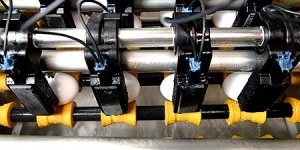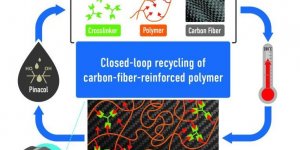| News / Tech News |
Researchers enhance reliability of electric vehicle charging
Driver uncertainty about access to charging during long trips remains a barrier to broader EV adoption, even as the U.S. strives to combat climate change by converting more drivers.

ORNL researchers are developing algorithms and multilayered communication and control systems that make electric vehicle chargers operate more reliably, even if there is a voltage drop or disturbance in the electric grid. Photo: Andy Sproles/ORNL, US Dept. of Energy
Researchers at the Department of Energy’s Oak Ridge National Laboratory are working to make EV charging more resilient. “The main focus is to make chargers available for EVs even if there is an electrical disturbance or hardware failure inside or outside the charger,” said ORNL’s Namwon Kim, a lead researcher on the project. “We want drivers to be able to use EV chargers as soon as they arrive at the charging station.”
After identifying the major challenges, ORNL researchers found solutions to address two key causes of charger failure — the first triggered by voltage shifts in the electric grid, and the other originating within the charger itself.
Kim and his team developed new algorithms to manage the operating parameters of the power electronic converters that are the keystone of EV charging hardware.
These converters are designed to shut off when power flow strays outside a standard range. If a small fault in the electric grid causes a fleeting drop in voltage, EV charging stops.
Similarly, the failure of one internal component can also shut everything down. Re-activating these chargers often requires maintenance, causing significant downtime at unmanned stations.
To cope with brief voltage sags, ORNL researchers implemented a “ride-through” control algorithm that rapidly reduces charging power, then restores it when voltage returns to normal seconds later.
The team created a real-time, automated test setup to emulate how the converter hardware responds to a variety of voltage blips. The ride-through controls enabled quick recovery of charging power.
There are broader benefits, too. If a grid fault causes many EV chargers to disconnect during high-power fast charging, the voltage level in the power grid can suddenly increase.
This condition may damage other unprotected electrical equipment. For this reason, ride-through capability protects not only the charger, but also the broader electric grid.
Sometimes a disturbance occurs within the charger itself. A single EV charger contains three power modules working together to convert and control charging power. The ORNL team created another algorithm allowing the converter to detect and adjust to an internal failure instead of turning off.
“Now when one module goes out, the converter can try to continue providing as much power as it can by dividing the load among the remaining two,” Kim said. “We are trying to keep the charger running at lower power while it awaits repair.”
Researchers also developed a new, multilayered approach for control and communication across the kind of larger EV charging system that resembles a gas station with many pumps: A systemwide controller is automatically notified of problems at individual chargers. It can then alter equipment settings for the best customer charging experience.
This research fits into a larger project with partners Pacific Northwest and Idaho national laboratories that includes automatic management of charging vehicle fleets, such as delivery or long-haul trucks, as well as monitoring for potential cyberattacks.
The station controller could control vehicle charging order and charging rates, balancing energy costs with cargo priorities.
Kim said the next step will be modeling how integrated battery storage and solar power could further ensure a station’s EV charging performance.
YOU MAY ALSO LIKE





